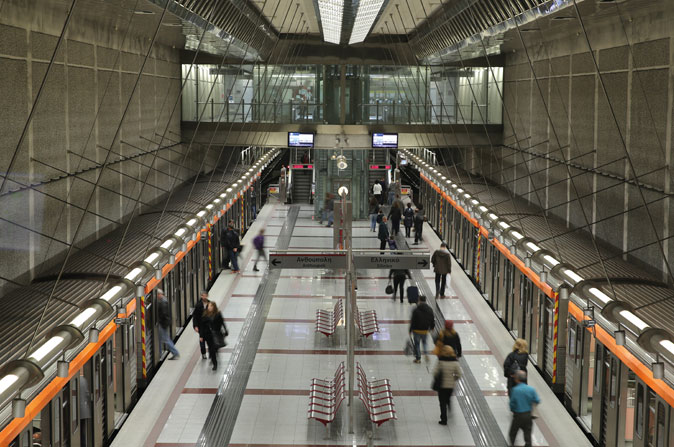Transport / Greece
Athens regions sees new push in transport infrastructure
About 1.2 million passengers use public transport every day in the Athens region. Stasy SA, the company that manages the metro and the tramway, was created in 2011 and has continued to grow ever since.

Aghios Dimitrios metro station - Alexandros Panagoulis
The metro development after the 2004 Olympics has helped the capital attract more tourists. Now, visitors can easily go to the Athenian Riviera and enjoy the sea thanks to the tram line that leaves from the center of Athens. Public transport also links all the entries to the capital: the Port of Piraeus, Athens Airport and the bus stations. With the help of the city of Athens, information campaigns in the metro were launched, informing tourists on places to visit in the Athens area. Metro stations are themselves a place of interest for tourists: archaeological discoveries that have resurfaced during the construction of the metro are exhibited with explanatory panels, allowing passengers to make a trip back in time. Stasy SA is also increasingly trying to promote modern art by exhibiting the works of young artists, and by allowing singers to perform in the stations.
With an urban population of more than 4 million people, Athens is the fourth most populous capital in the European Union. The city needs a large modern transit system to meet the needs of residents and visitors. The three metro and tram lines serve around 107 km in Attica and more than 250 bus lines cover a radius of around 6,000 km. In addition, several network expansion projects are planned. A new metro line of about 13 km is expected to be built and works should begin in 2018 with funding by the European Union through the 2014-2020 National Strategic Reference Framework. The EU has already invested about 5 billion euro in infrastructure since November 1992. Seven new tram stations also have to be installed. Through a public-private partnership and co-financing by the European Union, Stasy has also implemented an electronic ticket system, rechargeable for each trip. The cost of the project is 58.8 million euro and it aims to fight more effectively against transport fraud and save paper money.
Stasy SA has the technical capabilities and a competent staff that allows the company to become a leader in the field of transport and to participate in projects abroad. Stasy SA participates in a consortium for the construction of the “green” tramway line of Jerusalem. It is also involved in its operation and maintenance contract for over a period of 15 to 20 years. The estimated construction cost of the Jerusalem tramway is around 2 billion euro, while the total investment of the project is 12.5 billion euro. For the company president, Stavros Stefopoulos, this investment abroad proves to other Greek companies that it is possible to succeed despite the crisis. “After eight years of crisis, there is now light at the end of the tunnel. With a stable social environment, new business opportunities can be unlocked for the country”, explained Stavros Stefopoulos.
